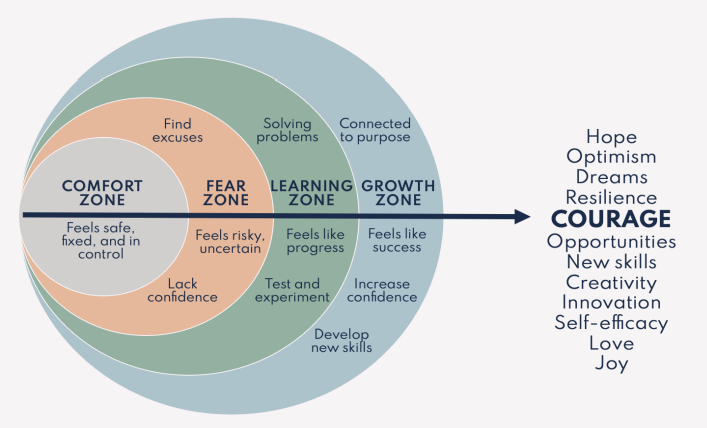Navigating Change and Uncertainty - Mastering Both the Inner and Outer Game of Leadership
Amid all the change and disruption of recent years and the unrelenting demands to innovate and deliver results, it can be tricky to navigate with our teams. It’s no wonder Navigating Change and Uncertainty has been one of our most requested topics this year.
In today's rapidly evolving business landscape, marked by AI disruption, shifting customer expectations, new leadership transitions, and countless other transformations, the most successful leaders understand that managing change requires mastering both the inner game and the outer game.
Drawing from Tim Gallwey's book, The Inner Game of Tennis, and applying his insights to the context of change, the inner game represents our mental state, emotional intelligence, and personal sense of agency when navigating change, while the outer game includes obstacles, market challenges, competitors, and more.
What this means for us as leaders is that we need to sharpen both our mindset and our skillset for executing change initiatives. Both are essential for leadership success in our uncertain world.
The Current State of Change Leadership
The statistics paint a sobering picture. According to the 2024 Gallup State of the Workplace, 5 in 10 employees report experiencing disruptive change within their organizations. Even more telling is the leadership gap: while 78% of leadership teams believe their changes are well-communicated and supported, only 46% of employees agree.
This disconnect isn't because our people are incapable of change. It's because we, as leaders, need to become more skillful at both the emotional and tactical dimensions of change leadership.
The Outer Game: 5 Parts of Change Execution
The outer game of change leadership focuses on the practical skillsets that create successful change initiatives. Our proven framework, the 5 C's helps leaders navigate the tactical side of change.
Read more about The Outer Game, including our 5 C’s framework.
The Inner Game: Mastering the Emotional Landscape of Change
While the outer game provides the tactical framework, the inner game addresses the emotional reality that change is deeply personal and often triggering. As Brené Brown wisely noted: "Leaders must either invest a reasonable amount of time attending to fears and feelings, or they will squander an unreasonable amount of time trying to manage ineffective and unproductive behavior."
Read more about The Inner Game, including our 10 strategies for mastering the inner game of change management.
From Comfort to Courage: The Growth Journey
The ultimate goal of mastering both the inner and outer game is moving from comfort to courage. When we choose growth over comfort and growth over fear, we access expanded versions of ourselves in the learning and growth zones.
The journey follows a predictable pattern:
Comfort Zone: Feels safe and controlled, but no growth occurs
Fear Zone: Uncomfortable and uncertain, where we make excuses
Learning Zone: Where we acquire new skills and solve problems
Growth Zone: Where we experience resilience, creativity, innovation, and joy
The key insight? Change challenges might always present as negative emotion. Sometimes it's our comfort zone where we feel safe and in control. Innovation requires stepping out of comfort zones with willingness to grow and embrace new ideas.
So when you are stuck in the comfort zone or fear zone, remember that on the other side is courage. And that’s where we get to experience all of the good stuff: hopes, dreams, opportunities, creativity, resilience, and joy.
Leading Change in an Uncertain World
Today's leaders must be equally skilled in both the inner and outer games of change. The outer game provides the tactical skills for successful change execution. The inner game develops the emotional intelligence and mindset mastery that allows us to navigate uncertainty with resilience and courage.
Remember Viktor Frankl's profound wisdom: "When we are no longer able to change a situation, we are challenged to change ourselves." Everything you need to lead through change, you already have inside you. The future is unwritten – your leadership shapes it.
The most successful leaders don't just manage change; they embrace it as an opportunity to lead boldly and with heart. By mastering both the inner and outer games, you create the conditions for your organization to not just survive change, but to thrive because of it.
Ready to dive deeper into change leadership? Choose any one of the strategies from the inner or outer game to experiment with this week. Change is not something that happens to us — it's something we actively navigate with skill, courage, and heart. Book a call with us to learn more about how we can influence positive change execution behavior in your organization.








